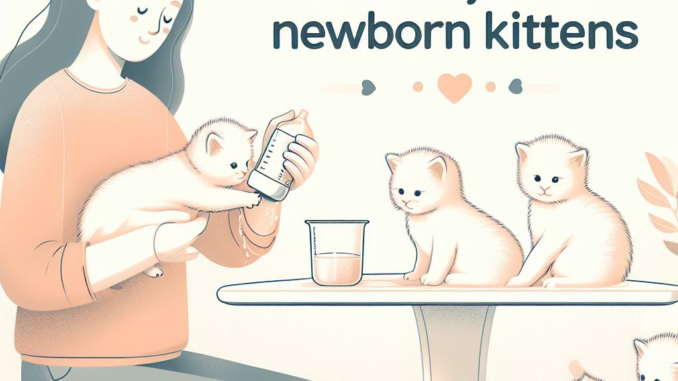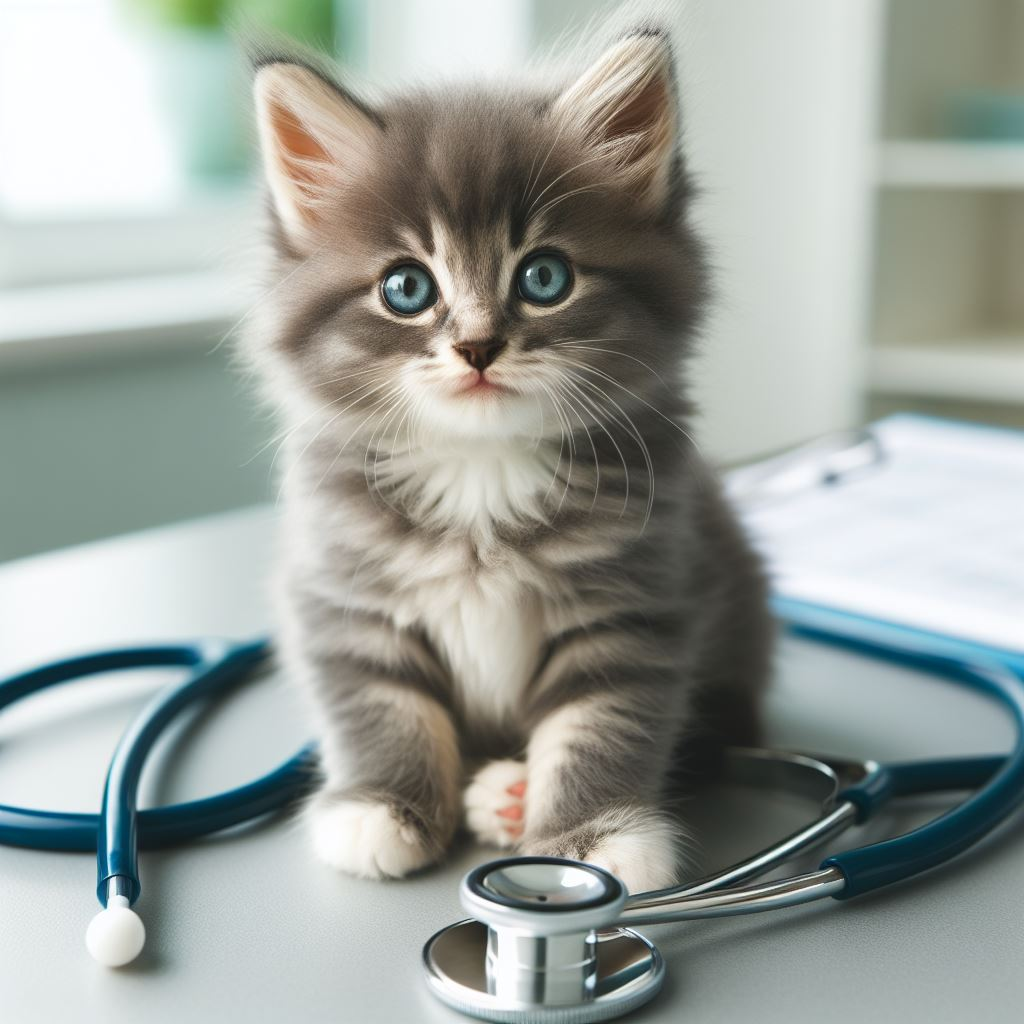
How Often to Feed Newborn Kittens
Oh my goodness, look at that little furball! Congratulations on your new family member. Taking care of newborn kittens is such a magical experience. But with great cuteness comes great responsibility, am I right? As a new kitten parent, you might have a ton of questions about keeping your kit safe and healthy. Well, I’m here to help with the inside scoop on feeding newborns – because proper nutrition is paws-itively vital for their growth and well-being!
Kitten Tummies 101: Understanding Their Unique Dietary Needs
Let’s start with the basics of kitten dietary requirements. Now, kittens aren’t just tiny cats – they actually have unique nutritional needs to support their rapid development. As Dr. Margie Scherk, a feline medicine expert, explains, “Growing kittens require a protein-rich diet with ample calcium and phosphorus.” That makes sense, right? To fuel all that high-octane playing, they need the right nutrients for healthy muscles, bones, and brains!
I like to think of it this way: kittens are champion sprinters, while adult cats are marathon runners. Both need fuel and hydration, just in different amounts and ratios. As a kitten parent, it’s your job to provide premium gas for that racecar-like metabolism!
Choosing Between Wet and Dry: The Great Kitten Food Debate

When stocking up at the pet store, you’ll likely face the classic conundrum – wet versus dry kitten food. Which is better? Well, each has some advantages. Wet food typically has more moisture, which is great for hydration and urinary health. However, it can leave residue on teeth. Dry food helps clean teeth through crunchy chewing and is super convenient for free feeding. But overeating dry food can easily happen, leading to tummy troubles or obesity. Ugh, decisions, decisions!
Personally, I mix it up for my kittens, doing some wet food meals and leaving dry food available for free-feeding times. This gives them variety while keeping their teeth clean. But every cat is unique, so I always recommend chatting with your vet to decide what works best!
How Much Should These Growing Kittens Eat Anyway?
Great question! Here’s a handy heuristic: kittens eat a ton more than adult cats. I mean, just look at them go! It’s incredible how their tiny bodies pack away the calories. Those nibbles sure add up. As a starting point, check the feeding guidelines on your kitten food bag or can. But since every furball is different, observe your kitten closely to tweak amounts as needed.
Ideally, aim for around 1 pound of weight gain per month to keep that growth on track. If you’re ever unsure about portions, your vet can provide tailored advice based on factors like activity level, breed size, and health conditions. Trust me, I’ve absolutely asked a million questions!
Free-Feed or Meal-Feed: Two Paths to Feeding Your Feline
Feeding style is another big choice. Do you free-feed dry food constantly available in a bowl or meal-feed at selected times? Pros and cons for both! With free feeding, food stays fresh, and they nibble at will. But watch portions to avoid obesity. For meal-feeding, you can monitor intake and use delicious wet foods. Just prepare for some meows when the bowl runs empty!
Luckily, there are handy gadgets to upgrade either feeding style. Timed feeders keep kibble handy but in controlled amounts. Interactive treat puzzles turn mealtimes into stimulated play. For my crew, we alternate between set wet food meals and free access to dry food and treats with puzzles. It keeps variety and interest high while preventing begging behaviors.
Nail That Feeding Schedule: How Often Should I Offer Meals?
For young kittens from 6-16 weeks old, that racecar metabolism means needing multiple meals daily if doing scheduled feedings. Aim to offer food about every 6-8 hours. Remember, they are voracious growers at that stage! This allows continuous energy for all their playing and explorations. It’s so precious but also so much work!
As kittens reach 4-5 months old, you can start gradually reducing meal frequency. Their growth rate has slowed enough that you can meet nutrient needs in 2-3 meals instead. Just ensure they still receive proper daily calories. At this stage my furry felines get high-quality wet food twice a day, plus free-feeding of dry food between meals.
Now, I definitely understand if your ravenous kitten ever turns up their nose at a meal. It could be just a finicky day, but also watch for signs of illness like lethargy or gastrointestinal issues. Both can severely impact appetite. Vet visits help diagnose problems like parasites – extremely common in young kittens needing prompt treatment.
Special Care for Orphaned Kittens: The Essentials of Bottle Feeding
Speaking of extra care, let’s talk about hand-raising orphaned kitten cases. Without a mama cat, human intervention via bottle feeding is crucial for providing essential nutrition. Be prepared to feed the little one every few hours around the clock! And remember, with no mother able to stimulate elimination, you’ll need to gently assist them with urinating and defecating using warm, damp cloths until about 4 weeks old.
I do have to warn, orphaned kittens mean REALLY early mornings and frequent feedings for quite a while. Not gonna lie; I was beyond exhausted! But saving their precious lives makes every sleepless night worth it. Just be sure to also give them plenty of affection and contact for positive socialization. This helps tremendously with long-term bonding and development when raising orphans.
Alright, clearly essential kitten care requires some serious effort. But trust me, watching them grow into happy, healthy cats is incredibly rewarding. Now, let’s explore other key diet and nutrition topics to keep your kit thriving…
Vitamins and Supplements: Do Kittens Need an Extra Boost?
Curious about vitamins or supplements? Typically, a nutritionally balanced commercial diet meets all essential kitten needs. But for picky eaters, rescues with unknown history, or kittens with health conditions, your vet may recommend additional nutrients. However, it’s important not to overdo supplements either. Caution is key, so always consult your vet before providing any additional vitamins or supplements to avoid toxicity.
Switching to Adult Cat Food: Making the Gradual Transition
As your rapidly growing furball eventually reaches adulthood, corresponding dietary adjustments become necessary, too. Around 12 months old, kittens are ready to switch from kitten chow to adult cat food. To avoid stomach upset from abruptly changing foods, transition gradually over 5-7 days.
Start by mixing a little adult food into their usual kitten meals, slowly increasing the ratio over the week. This allows time for digestive adaptation. Closely monitor weight, energy levels, litter box habits, etc., to catch any issues. Adjust transition pace or portions if needed. With patience and observation, the switch to adult food can set them up for long-term nutrition and health.
Troubleshooting Common Newborn Feeding Issues
Alright, no one said kitten feeding was easy! Picky eaters and potential allergies, oh my. If your furball turns up its nose or suffers upset tummies/skin, try temperature changes, texture/flavor switches, or limited ingredient diets. Identifying and managing food allergies ASAP helps avoid ongoing problems. And remember to always offer fresh, clean water to rule out dehydration causing reduced appetite.
Also importantly, steer clear of “table scraps” or human foods. Things we consider safe often wreak havoc on sensitive kitten digestive systems leading to nasty diarrhea or vomiting clean-ups… not fun at all! Your healthy kitty will be much happier with their own nutritionally balanced diet. Save the drama and stick to kibble.
Monitoring Health and Happiness Through Mealtimes
Regularly observing kitten feeding behavior provides important health insights, too. Decreased appetite, weight fluctuations, or different eating pace/frequency can indicate underlying issues requiring veterinary attention. Schedule regular check-ups to address concerns early, especially during crucial developmental stages.


Leave a Reply